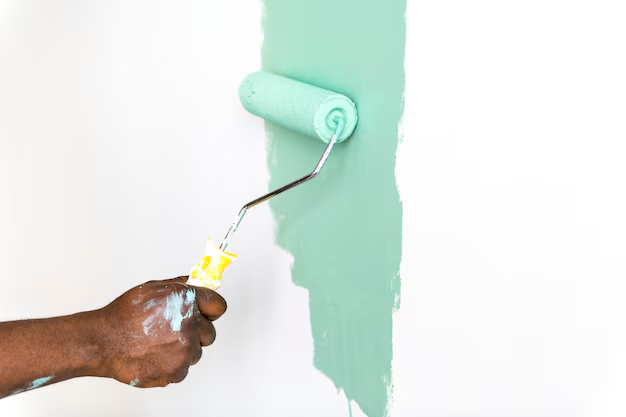Art is more than just colors on a canvas. It’s about feeling, expression, and storytelling. When you look at a painting, it’s not just what you see it’s what you feel. And that magic comes from two key things: brushstrokes and color.
Both these elements work together to bring life to any piece of art. A brushstroke here, a splash of color there, and suddenly, you’re looking at a masterpiece. Whether you’re an artist or just someone who loves art, understanding these two things can take your appreciation (or your painting skills) to the next level.
Table of Contents
The Magic Behind Brushstrokes
Brushstrokes are the very foundation of a painting. They’re not just random marks on a canvas. Each brushstroke is an artist’s way of telling a story. The way you move the brush—the speed, the pressure—gives the painting texture, depth, and personality.
Types of Brushstrokes You’ll Find

Every artist has a unique approach to brushstrokes. Some strokes are long and smooth, while others are short and quick. Here’s a quick breakdown:
- Long, smooth strokes are calming and serene. They can make a painting feel peaceful.
- Short, choppy strokes bring energy and movement. They can make the painting feel alive.
- Curved strokes can soften the feel of the painting, adding flow and grace.
Don’t be afraid to experiment with different styles of brushstrokes. After all, art is about finding what works for you.
Brushstroke Techniques to Try
One popular technique is impasto, where you apply thick layers of paint. This technique gives your artwork a textured, 3D effect. Think of Van Gogh’s famous “Starry Night” and its bold brushstrokes. That’s impasto in action.
Another technique is dry brushing. Instead of using a wet brush, you use a dry one with minimal paint. This creates a rough, almost scratchy texture that adds some awesome detail to your piece.
The Power of Color
Now let’s talk about color. It’s one of the most powerful tools an artist has. Color can change the mood of a painting. It can make you feel happy, sad, excited, or calm. It’s all about the emotion you want to evoke.
A Little Color Theory 101
Before you start painting, it’s good to know a bit about color theory. Don’t worry, it’s not complicated. Color theory helps artists figure out which colors work well together and why. Here’s a quick guide:
- The primary colors are red, blue, and yellow. These are the building blocks of all colors.
- Secondary colors (orange, purple, and green) are made by mixing two primary colors.
- Tertiary colors are created by mixing a primary color with a secondary color.
Colors don’t just look pretty. They also affect how we feel. Warm colors like red and yellow are energetic. Cool colors like blue and green feel calm. Understanding these emotions will help you create paintings that connect with your viewers.
Light and Shadows Play a Big Part
Light is super important when it comes to color. It can make a color look lighter or darker. Artists use light and shadows to add depth to their paintings. For example, the light side of an object might be painted with warmer tones, while the shadowed side uses cooler shades. This helps create a more realistic and dynamic image.
Brushstrokes and Color Aren’t Just for Traditional Art
You might think of brushstrokes and color only in terms of traditional painting, but they’re used in so many more ways. Cabinets painting is a perfect example of how these same techniques can be applied outside of canvas art.
Cabinets Painting: Turning Your Home Into Art

You might not realize it, but when you paint your cabinets, you’re creating art! The way you brush on paint and the colors you choose can change the entire vibe of a room. A sleek, smooth finish gives a modern touch, while a distressed look brings out character and warmth.
Picking the right colors for your cabinets can completely transform a space. Neutral shades like white and gray bring a calming feel, while bold, vibrant colors make a statement. Don’t underestimate the power of a fresh coat of paint—whether it’s on your cabinets or your canvas!
Art Isn’t Just About Technique, It’s About Feeling
Art isn’t just about using the right brushstrokes or colors. It’s also about what you feel when you look at the painting. Every brushstroke, and every color choice, tells an emotional story.
The Emotional Power of Color
Have you ever looked at a painting and instantly felt something? Maybe the bright yellow tones made you feel excited, or the cool blues made you feel calm. That’s the magic of color. Different colors can trigger different emotions.
- Warm colors like red, orange, and yellow are often energetic and passionate.
- Cool colors like blue and green have a calming, soothing effect.
- Neutral colors like beige, gray, and white are relaxing and sophisticated.
By using the right colors, an artist can make you feel whatever they want you to feel. That’s the real power of color.
Brushstrokes and the Feeling of Movement
It’s not just color that brings emotions to life. Brushstrokes also play a huge role. Fast, quick strokes can add excitement and tension. On the other hand, slow, smooth strokes create a peaceful, relaxed vibe. How an artist moves their brush impacts the mood of the piece.
Creating Art That Lasts
The best works of art stand the test of time. A painting can last hundreds of years if it’s done well. But what makes it timeless? Brushstrokes and color. These elements are what gives art its lasting power.
Look at Van Gogh’s “Starry Night.” The swirling brushstrokes and bold colors are still striking today. That’s because those elements don’t just look good; they make you feel something. Great art connects with people, no matter when it was made.


